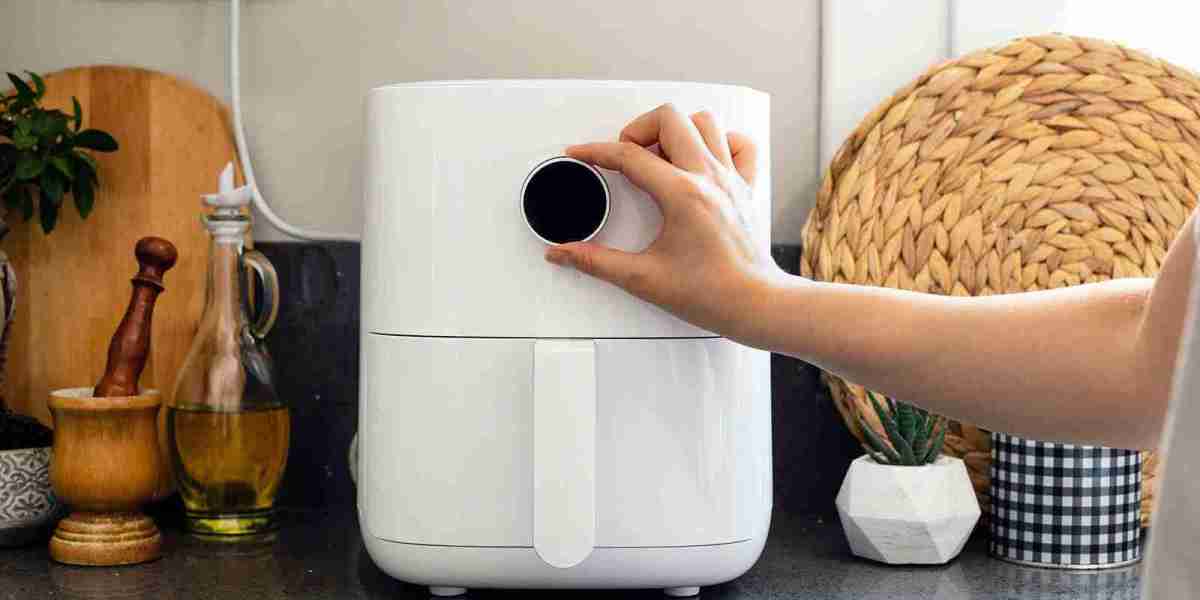In recent years, the air fryer has evolved from a kitchen novelty to a must-have appliance for health-conscious consumers around the world. As demand continues to surge, businesses and investors are increasingly turning their attention to the air fryer market. This article explores the current landscape of the air fryer industry, highlighting market trends, consumer behavior, growth opportunities, and key players.
Market Overview
The global air fryer market has experienced substantial growth in the past decade. What started as a niche product targeting early adopters of healthy eating has now become a mainstream kitchen appliance. As of 2024, the air fryer market is valued at over USD 1.5 billion and is projected to grow at a compound annual growth rate (CAGR) of approximately 7-10% through 2030. North America currently holds the largest share of the market, followed by Europe and Asia-Pacific.
Key drivers behind this growth include a rise in health consciousness, the increasing prevalence of lifestyle-related diseases, and shifting consumer preferences toward convenient and time-saving cooking solutions. In addition, the COVID-19 pandemic significantly boosted the market as more people cooked at home, seeking healthier ways to prepare their favorite meals.
Consumer Behavior and Preferences
Air fryers appeal to a wide demographic, but a few patterns stand out. Millennials and Gen Z consumers, in particular, are attracted to air fryers due to their convenience, compact design, and compatibility with a healthier lifestyle. These groups often rely on digital platforms and social media influencers to discover new products, and air fryers have benefited greatly from viral recipe videos and testimonials.
Furthermore, consumers are seeking multifunctional kitchen appliances. Air fryers that can also bake, grill, roast, and dehydrate are becoming increasingly popular. Features like digital touch screens, preset cooking modes, and Wi-Fi or Bluetooth connectivity are in high demand. Eco-conscious buyers are also driving demand for energy-efficient models.
Product Segmentation
The air fryer market can be segmented by product type, capacity, distribution channel, and geography:
By Product Type: Basket air fryers dominate the market due to their simplicity and ease of use. However, paddle-type and oven-style air fryers are gaining ground for their versatility.
By Capacity: Products are generally categorized into small (below 2 liters), medium (2–5 liters), and large (above 5 liters) capacities. Medium-sized fryers are most popular among families, while small ones are ideal for singles or couples.
By Distribution Channel: Online sales are growing rapidly, especially on platforms like Amazon, Walmart.com, and manufacturer websites. Nevertheless, physical retail stores such as Best Buy, Target, and specialty kitchenware stores remain important.
Regional Insights
North America: The U.S. leads in adoption, driven by high disposable incomes, fast-paced lifestyles, and greater awareness of health and wellness. The region is home to many leading manufacturers and a mature retail infrastructure.
Europe: European consumers are also embracing air fryers, particularly in countries like the UK, Germany, and the Netherlands. The trend toward eco-friendly and low-oil cooking aligns with regional preferences.
Asia-Pacific: This region is witnessing the fastest growth, fueled by rising urbanization, an expanding middle class, and growing exposure to Western lifestyles. Countries like China, India, and Japan are becoming key markets.
Competitive Landscape
The air fryer market is competitive and fragmented, with both global and regional players vying for market share. Some of the prominent companies include:
Philips – Often credited with popularizing air fryers globally, Philips continues to lead in innovation and design.
Ninja (SharkNinja) – Known for its powerful, feature-rich appliances that cater to modern consumers.
Cosori – A rising star with a strong online presence and value-for-money offerings.
Instant Brands – The company behind the Instant Pot has successfully entered the air fryer segment with hybrid products.
Tefal (Groupe SEB) – Popular in Europe, offering a wide range of air frying solutions.
These companies compete based on product innovation, pricing, marketing strategies, and after-sales service. Strategic partnerships, product launches, and digital marketing campaigns are common methods for brand differentiation.
Emerging Trends
Several key trends are shaping the future of the air fryer market:
Smart Air Fryers: Integration of IoT and smart technologies allows users to control their appliances via smartphone apps, receive notifications, and access a database of recipes.
Sustainable Design: There is increasing demand for appliances made with recyclable materials and energy-efficient technology.
Hybrid Appliances: Air fryer toaster ovens, pressure cooker-air fryer combos, and grill-air fryer hybrids are on the rise, catering to space-saving needs.
Culinary Content & Community: Brands are investing in recipe development and online communities to encourage repeat usage and brand loyalty.
Challenges and Considerations
Despite the promising outlook, the market faces several challenges. Price sensitivity in developing markets, concerns about the long-term durability of cheaper models, and lack of standardization in performance metrics are hurdles to widespread adoption. Moreover, as the market becomes saturated, brands must innovate to maintain a competitive edge.
Conclusion
The air fryer market is poised for continued growth, driven by health-conscious consumers, product innovation, and global lifestyle shifts. As brands compete to meet evolving consumer demands, the focus will likely remain on convenience, sustainability, and smart technology. For stakeholders across the supply chain—from manufacturers and retailers to investors—the opportunities are ripe for those who can anticipate and adapt to these dynamic market trends.




